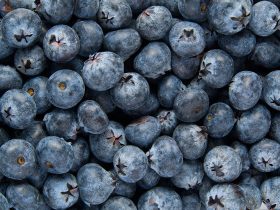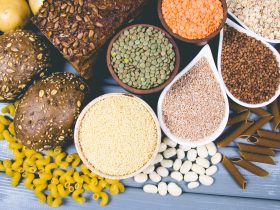When preparing a meal, it’s natural to want it to be tasty, easy to make, and nutritious. However, determining what is “healthy” can be complicated, as it varies from person to person due to factors like genetics, lifestyle, cultural background, and health conditions.
The nutrition world is also full of misconceptions and half-truths, making it challenging to discern what’s good for us.
While some basic principles, such as ensuring a balance of protein, complex carbohydrates, and healthy fats, can generally guide us in the right direction, other advice may need to be approached with caution.
We spoke to nutrition experts who shared the most common myths about healthy cooking and what you should consider instead.
This trustworthy guide will help you discover the world of nutrition and empower you to make informed decisions about your diet.
- If You’re on a Diet, it Needs to Be Mediterranean
While the Mediterranean diet is often touted as the gold standard for healthy eating, there is no one-size-fits-all approach to nutrition.
The emphasis on a Eurocentric eating pattern can lead to the dismissal of other diverse cuisines, potentially missing out on valuable nutritional sources.
For example, gut-healthy fermented foods like kimchi and sauerkraut, as well as anti-inflammatory spices like turmeric, are commonly found in non-Mediterranean diets.
It’s important to recognize and appreciate the rich culinary traditions from around the world, incorporating them into discussions of healthy eating.
This approach allows for a more inclusive and holistic understanding of nutrition, acknowledging that there are multiple paths to achieving a balanced and nourishing diet.
- Using Salt is Bad for Your Heart
Salt, often perceived as the villain when it comes to heart health, is actually an essential nutrient for various bodily functions, including maintaining the nervous system and regulating hydration.
Despite its importance, individuals with health conditions like high blood pressure are often advised to limit their salt intake.
While the general population may interpret this advice as a mandate to avoid salt entirely, the reality is that most adults can safely consume between 1,500 and 2,300 milligrams of salt per day, according to the American Heart Association – equivalent to about one teaspoon.
However, it’s essential to note that not all salts are equal; finer table salt contains more sodium per teaspoon compared to coarse kosher salt. Therefore, when cooking, a recipe might call for a teaspoon of salt, but this is typically divided among multiple servings.
Nonetheless, moderation is key, as excessive sodium consumption has been linked to high blood pressure and heart disease. If your doctor has recommended a specific sodium limit, it’s essential to follow their advice.
Otherwise, incorporating salt into your meals in moderation can enhance their flavor without compromising your heart health.
- Cooking with Fat Is Unhealthy
In the 1980s and 1990s, the low-fat diet trend rose to prominence. The belief was that fats, particularly saturated fats, were directly linked to health problems, most notably heart disease.
This prompted many to avoid cooking with fats altogether and opt for steaming or boiling methods instead. However, current research reveals that this notion was based on weak evidence.
In reality, fats are crucial for the body’s proper functioning. They provide a concentrated source of energy and aid in nutrient absorption.
Additionally, certain vitamins and minerals, such as vitamins A, D, E, and K, are fat-soluble, meaning they require fat to dissolve and be fully absorbed by the body.
In essence, preparing foods like stir-fries without a fat source limits the body’s ability to absorb essential nutrients from vegetables like broccoli, carrots, or peppers.
Moreover, fats like oils, butter, nut butters, and avocado contribute flavor and texture to meals, enhancing the overall culinary experience. It’s crucial to recognize that fats are an essential component of a balanced diet and to incorporate them into meals for optimal nutrition and taste.
Get more information on the health benefits and risks of consuming saturated fats and make decisions based on your personal needs and after consulting with your physician.
- The Microwave Kills All Nutrients
Microwaves are often criticized for their perceived impact on food nutrients, sometimes even being accused of radiating the food we eat.
While microwaving does alter the nutritional composition of food, it’s no more detrimental than other cooking methods like sautéing, roasting, or pressure cooking. According to scientists, the degree of nutrient loss depends on the food and the specific nutrients in question.
For instance, a study published in Frontiers in Nutrition found that microwaving leads to less loss of vitamins A and C and less degradation of B1 and B6 compared to other cooking methods.
Furthermore, there is no evidence to suggest that the radiation from microwave ovens poses any health risk. Therefore, if microwaving makes it easier for you to consume nutrient-rich food consistently, there’s no need to worry.
Microwave your meals confidently, knowing that it’s a convenient and safe cooking method that can help you maintain a healthy diet.
- You Should Eat Fresh Vegetables Only
While many people view fresh produce as the ideal choice for healthy cooking, this isn’t always the case. Frozen or canned vegetables, which are technically processed, offer just as much nutrition as fresh ones.
Moreover, they often taste better than out-of-season fresh vegetables because they’re harvested and preserved at the peak of their flavor.
Frozen and canned vegetables are also more affordable and accessible than fresh produce, making them a practical choice for many. They help people meet their daily recommended intake of fruits and vegetables without having to spend too much time or money.
Additionally, these products can save time during meal preparation, as some are already partially cooked.
For example, when making a pasta dish, adding frozen or canned zucchini, mushrooms, or peppers can provide nutrients, fiber, and flavor without the effort of slicing.
This convenience is particularly appreciated after a long day at work. Overall, frozen and canned vegetables can be just as nutritious and convenient as fresh ones, making them a great option for a healthy and hassle-free diet.
- Processed Convenience Foods Lack Nutrients
Many people view packaged convenience foods as nutritionally inferior to whole foods, but this belief is not entirely accurate. There is often a stigma associated with processed foods, implying that those who consume them are not prioritizing their health or may have access to fewer resources.
In reality, many store-bought foods undergo some degree of processing for preservation, safety, or convenience without compromising their nutritional value. In fact, certain processing methods, such as fortification, can enhance the nutritional content of foods by adding essential vitamins and minerals.
This is why relying on quick-cooking packaged foods like microwavable rice packets, fortified breakfast cereals, or even frozen dinners can provide a convenient and budget-friendly way to meet your nutritional needs without sacrificing taste or quality.
The important thing to remember is to choose packaged foods that provide nutritional value and satisfy your dietary needs while also fitting within your budget and schedule.
- Fruits Add Too Much Sugar to a Meal
It’s a common belief that adding fruit to your meals can contribute to excessive sugar consumption, potentially raising blood sugar levels and increasing the risk of diabetes. However, this concern may be unfounded for those without diabetes.
According to a 2016 review in the Journal of Diabetes Investigation, consuming more fruit may actually lower the risk of type 2 diabetes.
This is because fruit is not only a source of natural sugar but also contains essential nutrients such as vitamins, antioxidants, minerals, water, and fiber, all of which are beneficial to our health.
Current guidelines recommend consuming one and a half to two cups of fruit daily. Most people do not meet this recommendation, making it a safe option to incorporate fruit into your meals.
Doing so can help you meet your daily fruit intake and enjoy the health benefits it offers without worrying about excess sugar intake or its impact on diabetes risk.
- Brown Rice Is the Only Good Choice of Rice
While brown rice is often promoted as a superior option to white rice due to its higher fiber content, the actual difference in fiber between the two is minimal.
The net increase per serving is typically only about 1 to 1.5 grams, making the nutritional advantage of brown rice over white rice relatively modest.
If you’re not a fan of the taste or texture of brown rice, specialists advise against forcing yourself to eat it solely for its fiber content. Instead, consider using rice as a base for other fiber-rich ingredients you enjoy, such as vegetables, nuts, seeds, and legumes.
For instance, adding a quarter cup of lentils to a batch of white rice can provide a more significant fiber boost than eating brown rice alone.
Alternatively, you can enhance your rice bowl by incorporating roasted diced vegetables like cauliflower or Brussels sprouts. This approach allows you to enjoy the health benefits of fiber without compromising on taste or texture.
- Eating Healthy is Expensive and Requires Lots of Time
One of the most prevalent and detrimental myths about healthy cooking is the belief that it requires a significant amount of time and money.
This myth is perpetuated by the portrayal of beautifully crafted, 100% fresh food by influencers on social media, making it appear as though this is the only way to have a well-rounded diet. However, achieving a nutritious meal doesn’t have to be a daunting task.
With the right resources and knowledge, it’s possible to create a quick, convenient, and budget-friendly meal that’s just as nutritious as a more elaborate one.
Meal prep can be a helpful tool in this regard. There’s no rule that says you have to cook a different nutritious meal every day. By incorporating nutrient-rich processed foods and canned or frozen fruits and vegetables, as well as flavorful ingredients that you enjoy, you can make healthy meals that are both convenient and accessible.
This approach can make cooking feel more approachable and may even spark a newfound excitement for the process.
















Find Us on Socials